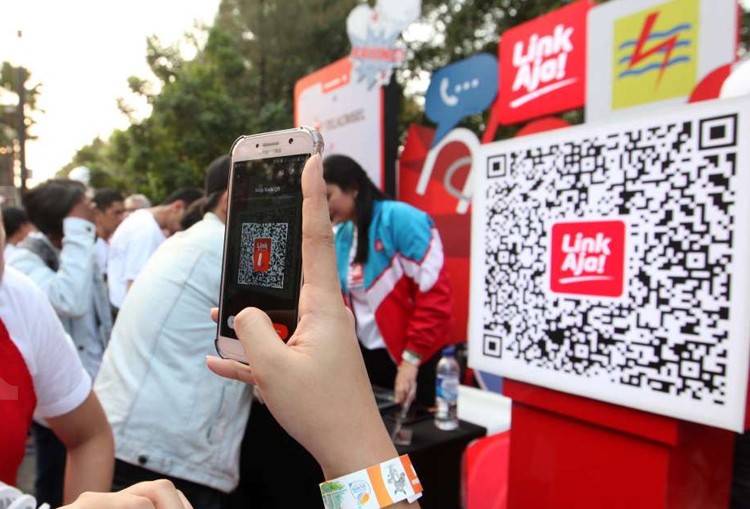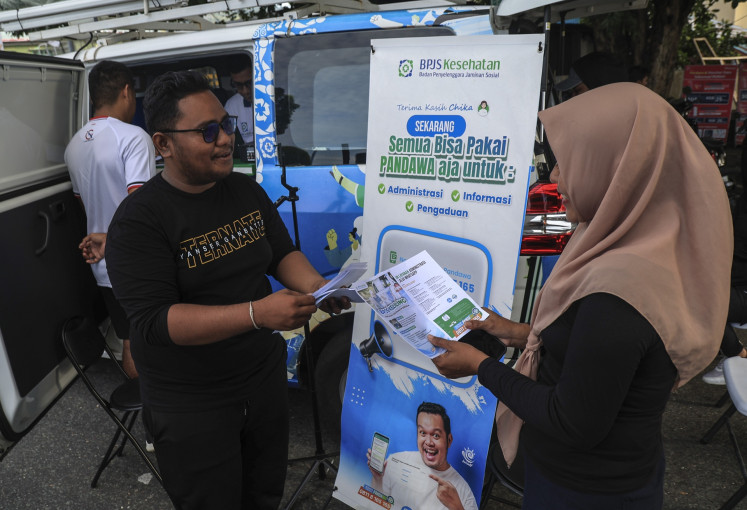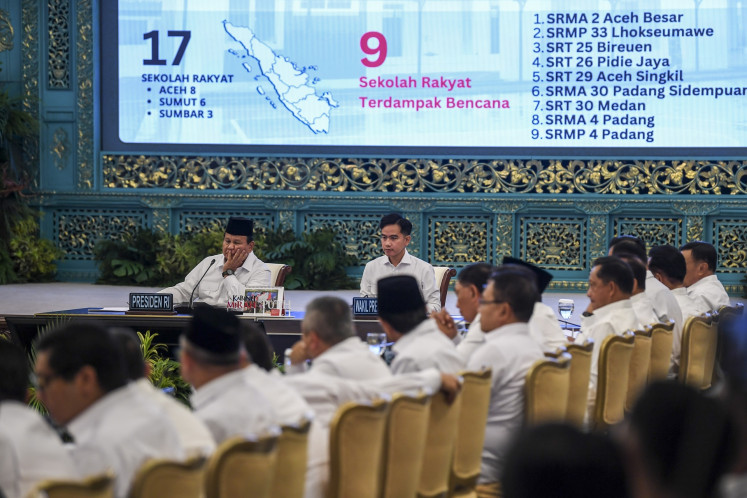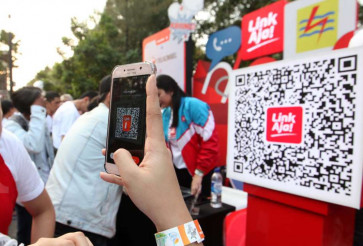Popular Reads
Top Results
Can't find what you're looking for?
View all search resultsPopular Reads
Top Results
Can't find what you're looking for?
View all search resultsHow inclusive is financial inclusion in Indonesia?
The clamor of fintech lending in recent years should not distract us from the various government outreach financial inclusion programs that help more Indonesians gain access to not just loans but also saving, insurance and payment services.
Change text size
Gift Premium Articles
to Anyone
T
he clamor of fintech lending in recent years should not distract us from the various government outreach financial inclusion programs that help more Indonesians gain access to not just loans but also saving, insurance and payment services. Laku Pandai (Smart Act branchless banking), digital financial services and the digitization of social assistance have contributed to the increase of Indonesia’s financial inclusion rate from 20 percent in 2011 to 36 percent in 2014, and further to 49 percent in 2017 (World Bank, 2018). Nevertheless, at roughly 5 percent of annual growth on average, the inclusion rate for 2019 is estimated at 65 percent at best, thus missing the government target of a 75 percent inclusion rate.
So, what improvements can be made to the running programs to accelerate Indonesia’s financial inclusion? Furthermore, if we compare Indonesia’s progress to that of India or Kenya, the difference is striking. Is there anything that the Indonesian government and authorities have missed so far in their efforts to provide financial services for the unbanked?
There are two categories of a global practice for financial inclusion: (1) bank-led financial inclusion and (2) telecommunications company (telcom)-led financial inclusion. Bank-led financial inclusion is mainly about using banks rather than telecoms to appoint (informal and formal) business entities as bank agents to provide financial services to the unbanked. Indonesia’s financial inclusion is bank-led, since the primary program is the agency bank (Laku Pandai) and Bank Indonesia Regulation (PBI) No. 20/6/2018 prohibits mobile network operators (MNOs) to appoint informal business entities as their e-wallets agents.
Kenya with M-PESA and M-Shwari is an outstanding example of a country with telcom-led financial inclusion. For India, although the Reserve Bank of India’s (RBI) stance has always been geared toward bank-led financial inclusion, MNOs are allowed to use their (informal) mobile money agents to deliver their financial services.
Most Indonesians over 15 years old have access to mobile phones with more than 50 percent of them having a smartphone or tablet. Mobile phone users must have access to MNOs’ (informal) airtime agents, which are ubiquitous even in the remote areas of the country, where a substantial share of the unbanked live. On the other hand, bank agents through Laku Pandai may be limited to where the bank branch exists. Also, as the unbanked are mostly low-income households with frequent and small value transactions, banks are not economically efficient when providing this typical financial transaction.
Thus, telecoms have an advantage over banks for the profitability and sustainability of agents. Nevertheless, in Indonesia, MNOs’ financial product is dedicated only to e-wallets with most people using it as a means of payment or transfer. Of course, people may use e-wallets as a saving account if they register their account, yet the number of registered e-wallet holders is minuscule — in 2018, there were less than 1.1 percent of them.
E-wallet usage that is limited to only payments is related to the fundamental drawback of using MNOs as the leading player of financial inclusion. MNOs are not financial institutions (i.e. run financial services that are not their core business). Thus, for the sake of consumers, the central bank, Bank Indonesia (BI), may have a valid reason to prohibit MNOs from using an informal business entity as their agent.


















